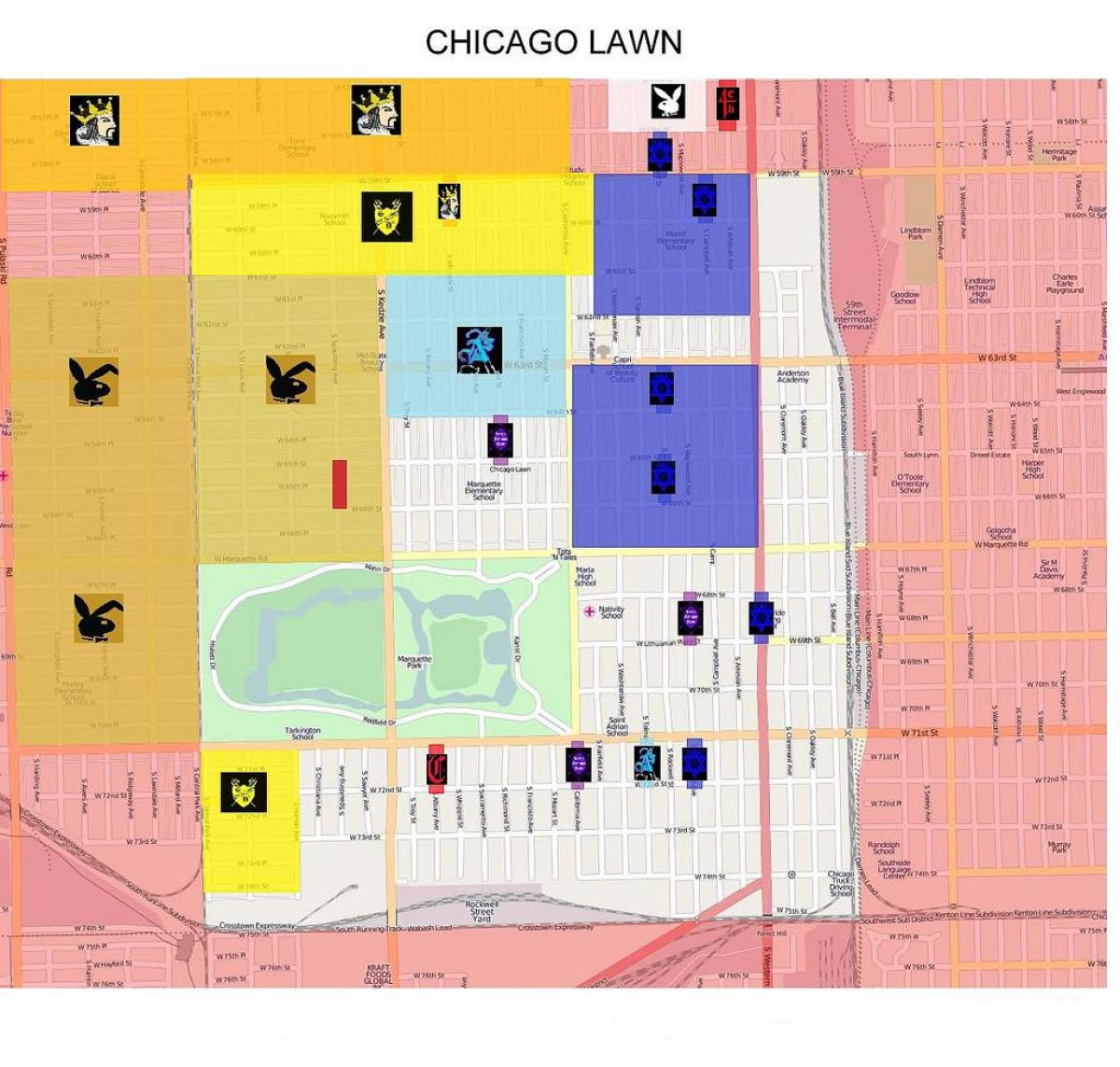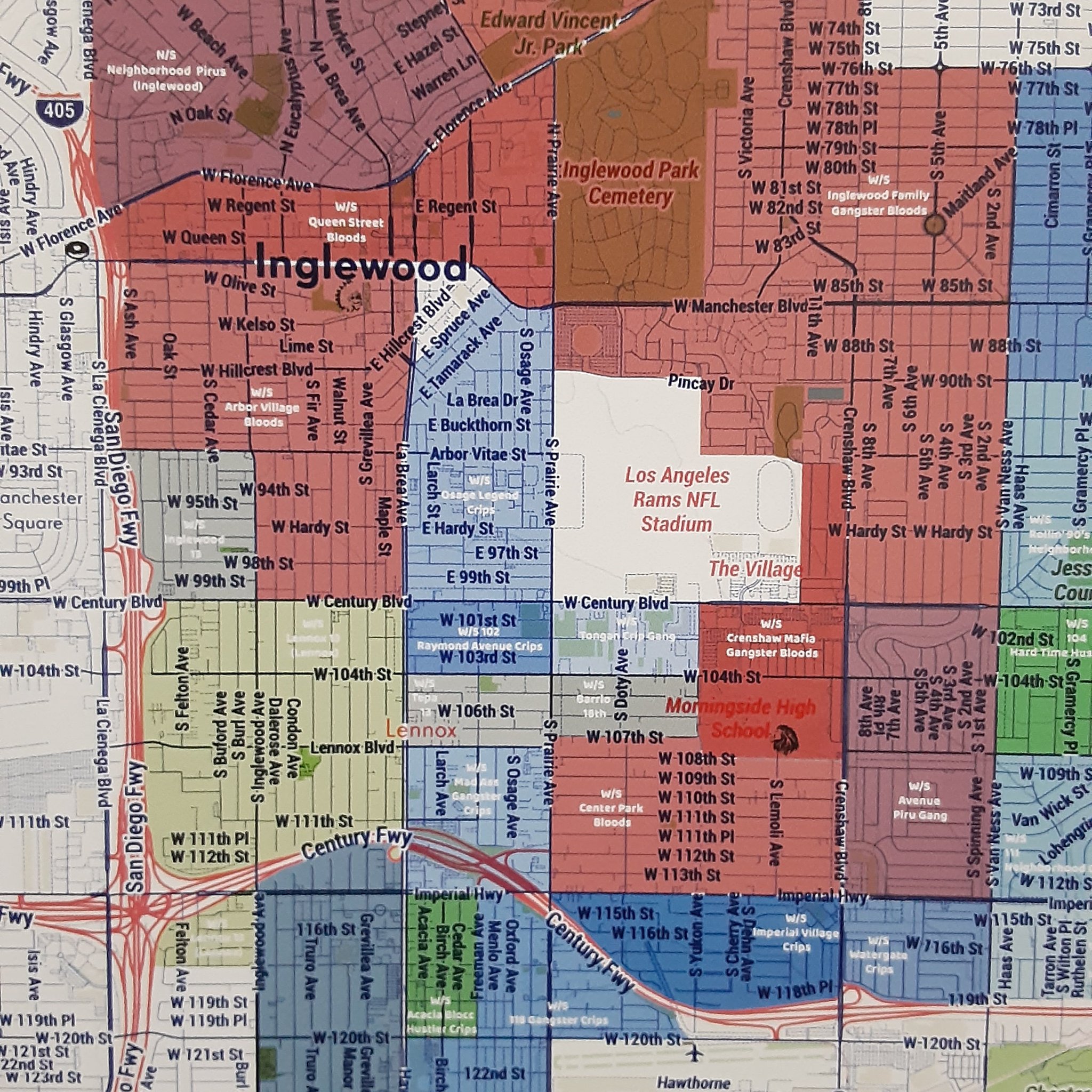Gang Map: The Ultimate Guide To Understanding Urban Territories
Ever wondered how gangs claim territories or why certain neighborhoods have specific reputations? Welcome to the world of gang maps. This isn’t just about lines on a map—it’s about understanding the intricate web of power, control, and influence that shapes urban landscapes. Whether you're a curious urban explorer, a student of sociology, or someone looking to stay safe in unfamiliar areas, this guide will give you the inside scoop on gang maps.
Gang maps aren’t just for law enforcement anymore. They’ve become a critical tool for anyone who wants to understand the hidden dynamics of cities. These maps show you where different gangs operate, what their boundaries are, and how they interact with each other. And trust me, it’s not as straightforward as you might think. Gangs don’t just draw lines and say, “This is ours.” It’s a complex game of power, respect, and survival.
But before we dive into the nitty-gritty, let’s clear something up. This isn’t about glorifying gangs or their activities. Instead, it’s about education, awareness, and safety. By understanding gang maps, you can navigate urban areas more confidently and avoid trouble. So, buckle up, and let’s explore the world of gang maps together.
Read also:David Muir In Relationship Exploring The Life Career And Love Story Of The Renowned Journalist
What Exactly Is a Gang Map?
A gang map is essentially a visual representation of gang territories within a specific area. It’s like a blueprint that shows you where different gangs operate and how they divide the city. But here’s the kicker—gang maps aren’t just about physical boundaries. They also show you areas of influence, alliances, and rivalries.
For law enforcement, gang maps are crucial tools for tracking gang activity and preventing violence. For researchers, they provide valuable insights into the social dynamics of urban areas. And for the average person, they offer a way to stay informed and safe.
Why Are Gang Maps Important?
So, why should you care about gang maps? Well, for starters, they’re a matter of safety. If you’re traveling through an unfamiliar neighborhood, knowing which areas are controlled by certain gangs can help you avoid trouble. Plus, understanding gang maps can give you a deeper appreciation for the complexities of urban life.
- Gang maps help law enforcement track and prevent gang-related crimes.
- They provide valuable insights for urban planners and sociologists.
- They offer practical information for residents and visitors alike.
How Are Gang Maps Created?
Creating a gang map isn’t as simple as drawing lines on a piece of paper. It involves a lot of research, analysis, and collaboration. Law enforcement agencies, community organizations, and researchers all play a role in mapping out gang territories.
Data is collected from a variety of sources, including police reports, community feedback, and even social media. This information is then analyzed to create a comprehensive map that shows where different gangs operate and how they interact with each other.
Key Factors in Mapping Gang Territories
When creating a gang map, several factors are taken into consideration:
Read also:A Sneaky Look At Rob Dyrdek Net Worth The Skaters Fortune Unveiled
- Geography: Physical boundaries like streets, rivers, and parks often play a role in defining gang territories.
- Demographics: The ethnic and socioeconomic makeup of a neighborhood can influence gang activity.
- History: Past conflicts and alliances between gangs can shape current boundaries.
The Role of Technology in Gang Mapping
Technology has revolutionized the way gang maps are created and used. GIS (Geographic Information Systems) software allows law enforcement and researchers to create detailed, interactive maps that can be updated in real-time. This technology also enables the integration of other data sources, such as crime statistics and social media activity.
But here’s the thing—technology isn’t a silver bullet. While it can provide valuable insights, it’s not a substitute for on-the-ground knowledge and community engagement. That’s why law enforcement agencies often work closely with community organizations to ensure their maps are accurate and up-to-date.
Challenges in Using Technology for Gang Mapping
Despite its benefits, using technology for gang mapping comes with its own set of challenges:
- Data accuracy can be an issue, especially if it relies heavily on police reports.
- Privacy concerns may arise when using social media data.
- Technological tools may not always capture the nuances of gang dynamics.
Famous Gang Maps Around the World
Gang maps aren’t just a U.S. phenomenon. They exist in cities all over the world, each with its own unique characteristics. From the favelas of Rio de Janeiro to the streets of Johannesburg, gang maps provide a window into the complex social dynamics of urban areas.
Let’s take a look at some of the most famous gang maps:
- Los Angeles: Known for its extensive gang activity, LA’s gang maps are some of the most detailed in the world.
- Mexico City: With its high levels of cartel activity, Mexico City’s gang maps are a crucial tool for law enforcement.
- London: The UK capital has its own set of gang maps, reflecting the diverse nature of its neighborhoods.
How Do Gang Maps Vary Across Different Cities?
While the basic concept of gang maps remains the same, their specifics can vary widely depending on the city. Factors like population density, economic conditions, and cultural norms all play a role in shaping gang dynamics.
For example, in cities with high levels of poverty, gang maps may show a greater overlap of territories, as gangs compete for limited resources. In contrast, wealthier cities may see more defined boundaries, as gangs focus on controlling specific areas.
Understanding Gang Alliances and Rivalries
Gang maps aren’t just about boundaries—they also show you the complex web of alliances and rivalries that exist between gangs. These relationships can shift rapidly, depending on factors like leadership changes, territorial disputes, and external pressures.
For law enforcement, understanding these dynamics is crucial for predicting and preventing gang-related violence. By analyzing gang maps, they can identify potential flashpoints and take proactive measures to prevent conflicts from escalating.
How Do Alliances and Rivalries Affect Gang Maps?
Alliances and rivalries can have a significant impact on gang maps:
- Alliances: When gangs form alliances, their territories may merge or overlap, creating new power dynamics.
- Rivalries: Intense rivalries can lead to clearly defined boundaries, as gangs seek to protect their turf.
The Impact of Gang Maps on Urban Communities
Gang maps don’t just affect law enforcement and researchers—they also have a profound impact on the communities they represent. For residents, living in a gang-controlled area can be a double-edged sword. On one hand, gangs can provide a sense of identity and protection. On the other hand, they can also bring violence and instability.
Community organizations often use gang maps to identify areas that need the most support. By understanding the dynamics of gang activity, they can develop targeted interventions to reduce violence and improve quality of life.
How Can Communities Use Gang Maps for Good?
Here are a few ways communities can use gang maps to promote positive change:
- Identify areas that need additional resources or support.
- Develop targeted programs to engage at-risk youth.
- Build partnerships with law enforcement and other stakeholders.
The Future of Gang Mapping
As technology continues to evolve, so too will the field of gang mapping. Advances in AI and machine learning could make it easier to analyze large datasets and identify patterns in gang activity. However, these tools must be used responsibly to avoid perpetuating biases or infringing on privacy rights.
Looking ahead, the key to effective gang mapping will be balancing technological innovation with community engagement. By working together, law enforcement, researchers, and community organizations can create maps that not only reflect the reality of gang activity but also promote safety and understanding.
What Does the Future Hold for Gang Maps?
Here are a few trends to watch:
- Increased use of AI and machine learning for data analysis.
- Greater emphasis on community involvement in map creation.
- Integration of real-time data sources for more accurate maps.
Conclusion: Why Gang Maps Matter
Gang maps are more than just lines on a map—they’re a window into the complex world of urban gangs. By understanding these maps, we can gain valuable insights into the social, economic, and political factors that shape our cities. Whether you’re a law enforcement officer, a researcher, or just an interested citizen, gang maps offer a unique perspective on the hidden dynamics of urban life.
So, the next time you hear about gang maps, don’t dismiss them as just another tool for law enforcement. They’re a powerful resource for anyone who wants to understand and improve their community. And remember, knowledge is power. The more you know about gang maps, the safer and more informed you’ll be.
Got any questions or thoughts about gang maps? Drop a comment below and let’s chat! And if you found this guide helpful, don’t forget to share it with your friends and followers. Together, we can spread awareness and promote understanding of this important topic.
Table of Contents
- What Exactly Is a Gang Map?
- Why Are Gang Maps Important?
- How Are Gang Maps Created?
- Key Factors in Mapping Gang Territories
- The Role of Technology in Gang Mapping
- Challenges in Using Technology for Gang Mapping
- Famous Gang Maps Around the World
- How Do Gang Maps Vary Across Different Cities?
- Understanding Gang Alliances and Rivalries
- How Do Alliances and Rivalries Affect Gang Maps?
- The Impact of Gang Maps on Urban Communities
- How Can Communities Use Gang Maps for Good?
- The Future of Gang Mapping
- What Does the Future Hold for Gang Maps?
- Conclusion: Why Gang Maps Matter
Article Recommendations


